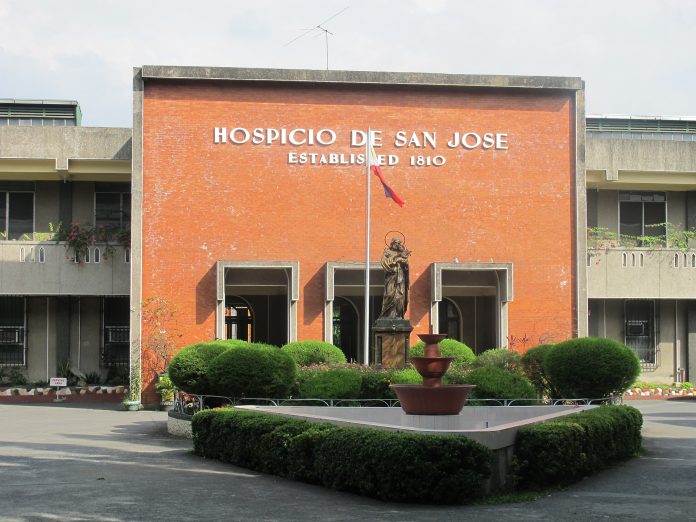A Catholic nun appeals for help as COVID-19 cases overwhelmed the Hospicio de San Jose orphanage in Manila.
At least 103 wards and personnel of the Church-run shelter for orphans and homeless have been found positive for COVID-19, with at least three already brought to the hospital.
Sister Maria Socorro Pilar Evidente, administrator of Hospicio de San Jose, said three elderlies and 49 children were tested positive for the virus.
Sister Evidente appealed for donations for those locked down in the facility — 180 personnel, 13 nuns, 276 wards, and dependents of the facility’s personnel.
“We’ve long been under lockdown and we have to feed our people three meals a day,” said the nun over a radio interview on August 23.
“Until we have the virus, we will remain on lockdown,” said Sister Evidente.
She said the surge in cases could be traced to the personnel who had to go out of the facility for medical appointments.
“Those who went to see their doctors, most of them turned out positive for COVID-19,” said the nun. “The rate of increase was quick unlike in April to June when the increase was slow,” added the nun.
The Philippines has listed 16,044 new COVID-19 cases on Sunday, pushing the total number of confirmed infections to 1,839,635.
Based on the Department of Health’s latest case bulletin, 215 new fatalities were also logged, bringing the country’s COVID-19 death toll to 31,810.

Meanwhile, 13,952 patients have recovered, raising the total number of recoveries to 1,681,925.
The number of active COVID-19 cases now stands at 125,900 or 6.8 percent of the COVID-19 tally.
Of the number of active infections, 93.8 percent are mild, 3.4 percent are asymptomatic, 0.6 percent are critical, 1.2 percent are severe, and 0.94 percent are moderate.
Initially named the Hospicio General, Hospicio de San José was established in October 1778 by Don Francisco Gómez Enríquez and his wife Doña Barbara Verzosa.
After being cured of a fever, Don Gómez Enríquez donated the sum of 4,000 pesos to found the hospice that would take care of Manila’s “poor and unwanted children,” the physically and mentally handicapped, and aging people.
The initiative and example of Don Gómez Enríquez was followed by other charitable people of Manila.
From Dec. 27, 1810, and by Royal Decree, the hospice was governed by a Board of Directors chaired by the Archbishop of Manila.
On June 1, 1866, through the suggestion to the Governor-General of the Philippines by a benefactor named Doña Margarita Róxas, the operation of the hospice became the responsibility of the Daughters of Charity of St. Vincent de Paul.









